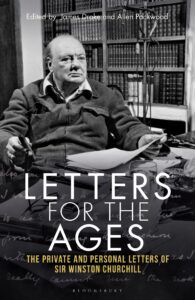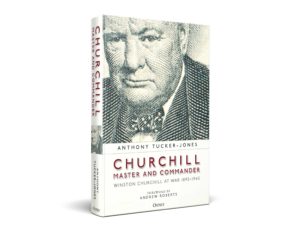Finest Hour 164
Books, Arts & Accomplishments – The Mary Soames Canon 1979-2011 FINEST HOUR’S REVIEWS OF ALL HER BOOKS – Wife and Family

Winston Churchill, Parliament Square, London © Sue Lowry & Magellan PR
February 10, 2015
Finest Hour 164, Special Edition, September 2014
Page 20
By Christopher H. Sterling
Clementine Churchill: The Biography of a Marriage. Penguin / Houghton Mifflin, 1979. Updated and revised edition, Mariner Books, 2003, 752 pages.
Lady Soames’s first book, this loving yet measured biography, recently updated with more illustrations, is a warmly readable account of Sir Winston’s “other half,” and the strong marriage that stretched from 1908 to 1965. Clementine survived him by a dozen years, through the centenary of his birth and beyond. Re-reading this account many years after the original is a delightful reintroduction to a formidable lady, without whom it is hard to imagine Winston Churchill accomplishing as much as he did.
The most startling “new” fact herein is that Henry Hozier was almost certainly not Clementine’s father. That was most likely the dashing but short-lived equestrian William George “Bay” Middleton, one of several lovers of the headstrong and passionate Blanche Hozier, who had an unhappy marriage. Lady Soames makes clear that while Clementine suspected toward the end of her life that Hozier was not her father, she never knew who was.
A strength of this book is its dependence not only on the author’s personal experience (she was certainly the closest to her parents of all the Churchill offspring), but on the massive correspondence among the family. Many letters between her parents are quoted, along with letters between Clementine and her children and other notables. The strength of the relationship between Winston and Clementine through thick and thin comes winningly through in their own words. Her letters also help the reader get behind the sometimes cool demeanor of the public Clementine.
For all her life she had somewhat fragile physical and psychological defenses with which to face the winds of a crowded life filled with pressures, occasional tragedies (such as the early death of her daughter Marigold in 1921) and the constant need to be supportive of a whirlwind named Winston. There is frequent reference to Clementine’s need to “get away” for breaks, for a few days up to a month or more.
The strong bond between them continued when they were apart, and with one exception, Clementine Churchill never feared to raise a difficult subject with her Winston. The exception came at the end, when Churchill understandably had a very rough time agreeing finally that he should retire from Parliament in 1964 so that his constituency could run an active Conservative candidate. Even here, Clementine worked with others behind the scenes to ease the way to the end of his spectacular career.
And Lady Soames knows how best to paint a scene—her description of the funeral of Sir Winston is very moving, as are the pages relating her mother’s final years.
Their daughter tells us much about Clementine’s reactions to Winston’s friends. Clearly, she feared the harm his more free-wheeling comrades might cause him, even unwittingly. For example, at first she long held a jaundiced view of Max Beaverbrook, the swashbuckling Canadian press lord, only coming around to admire “the Beaver” late in life. On the other hand, she was most fond of “The Prof” (Frederick Lindemann), the sometimes bumptious Field Marshal Montgomery (who took her call-outs with good grace), and the often difficult Charles de Gaulle, with whom she conversed in flawless French.
Do you need this new edition if you have the original? I would argue yes, for at least two reasons—it is physically easier to read, thanks to the larger type; and it contains Mary Soames’s most considered and complete view of her mother’s life a generation after Lady Churchill’s passing. In a word, bravo.
Dean Sterling teaches Communications at The George Washington University in Washington, D.C. His review of the new revised Clementine Churchill appeared in FH 120, Autumn 2003. His review of Family Album, written for this issue, excerpts some comments from our original review in FH 37.
Subscribe
WANT MORE?
Get the Churchill Bulletin delivered to your inbox once a month.






